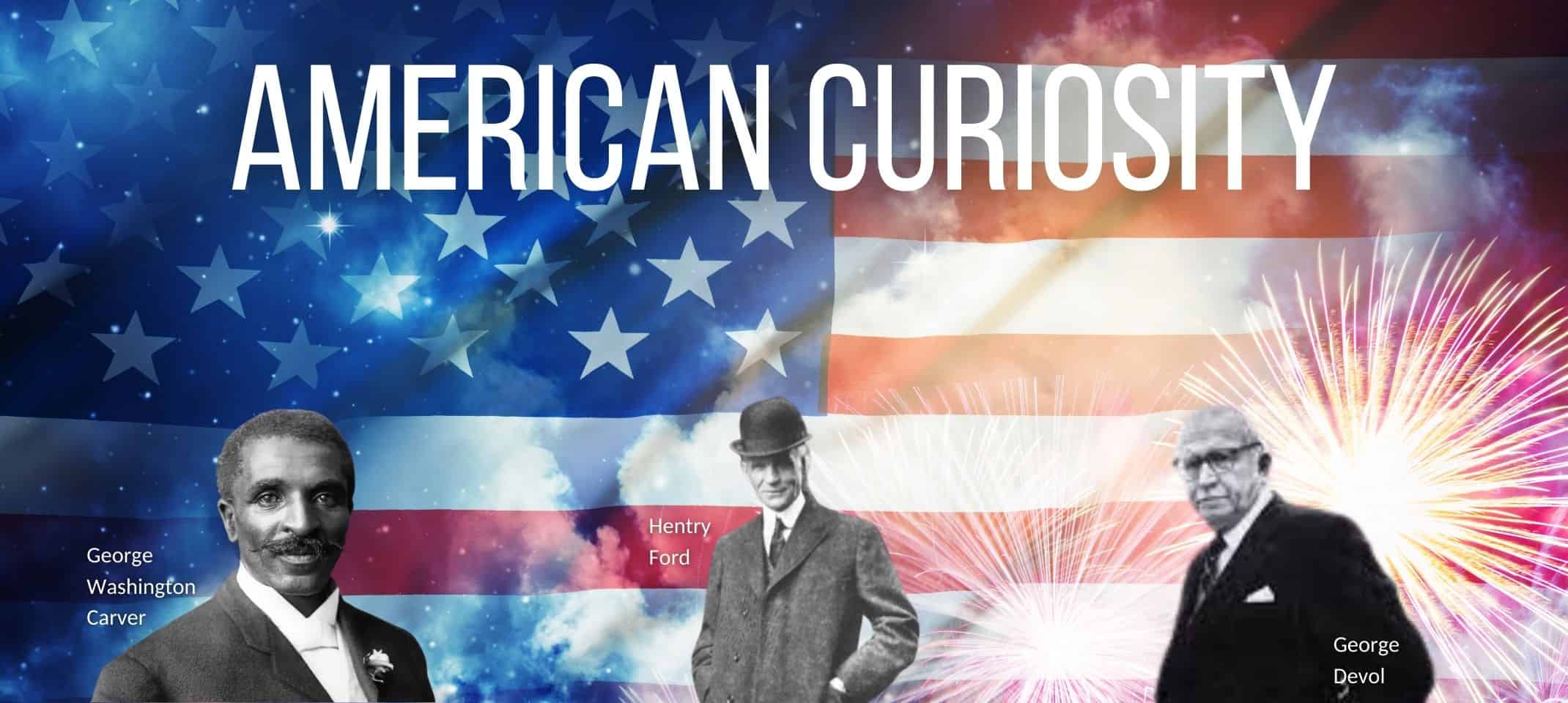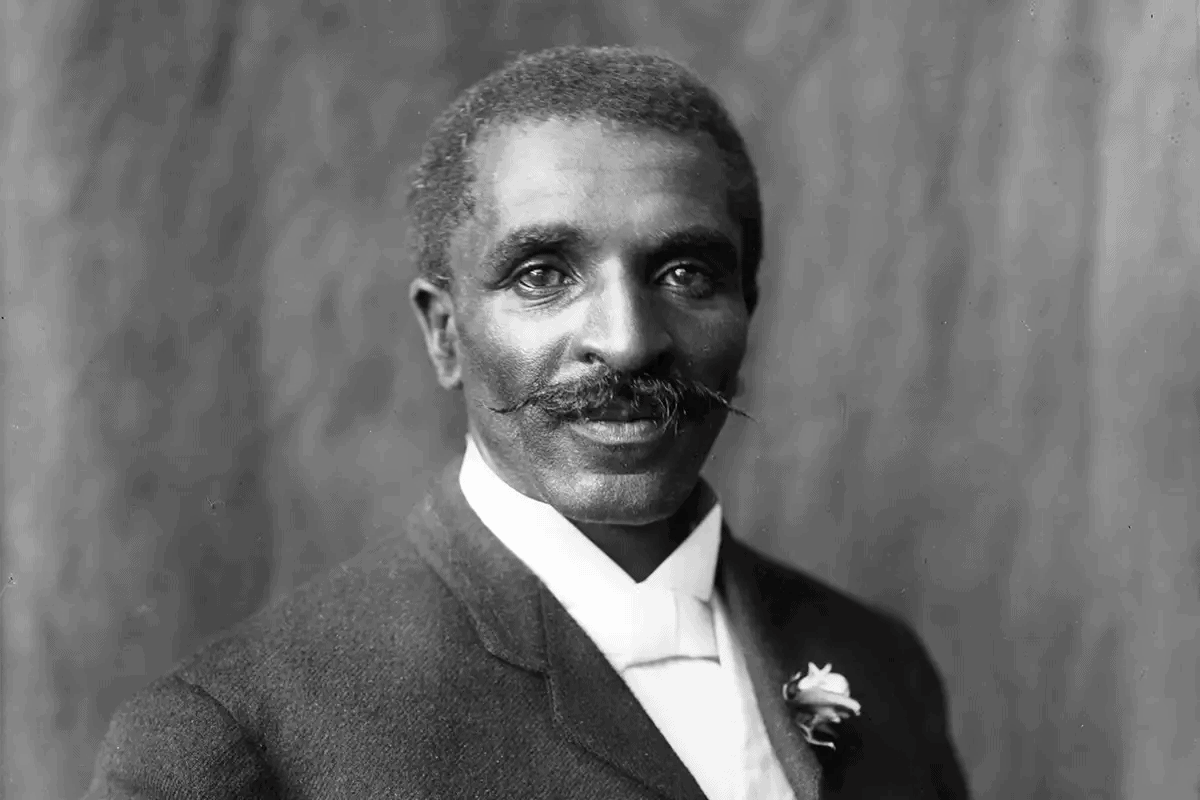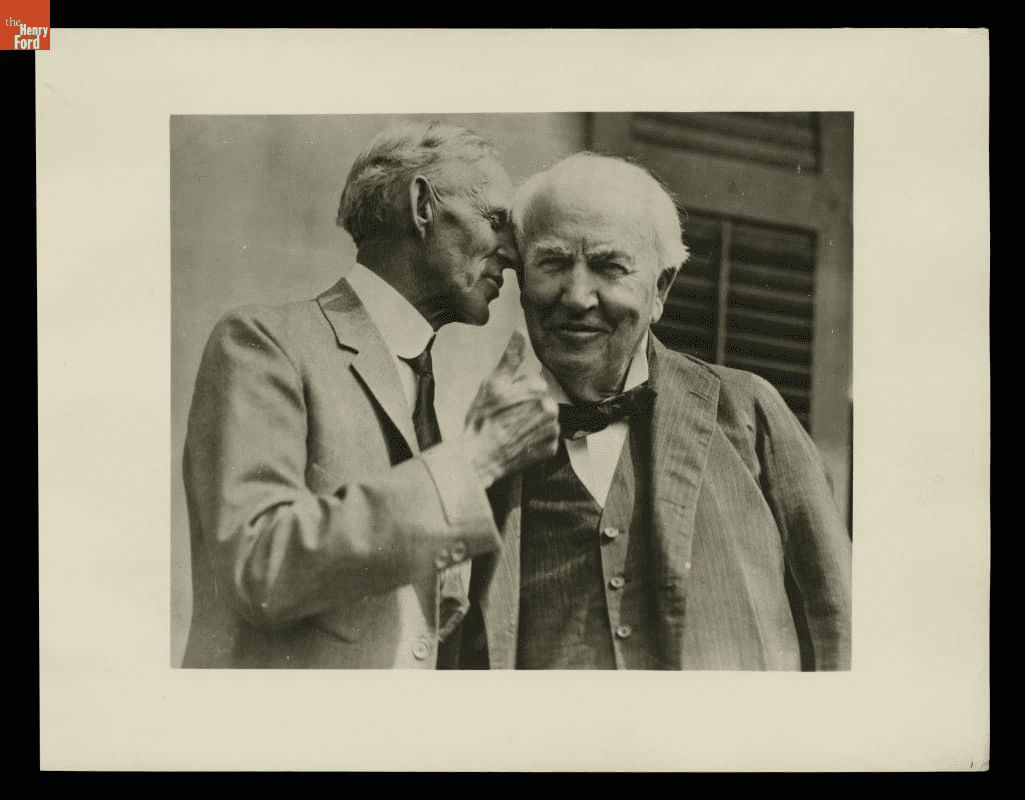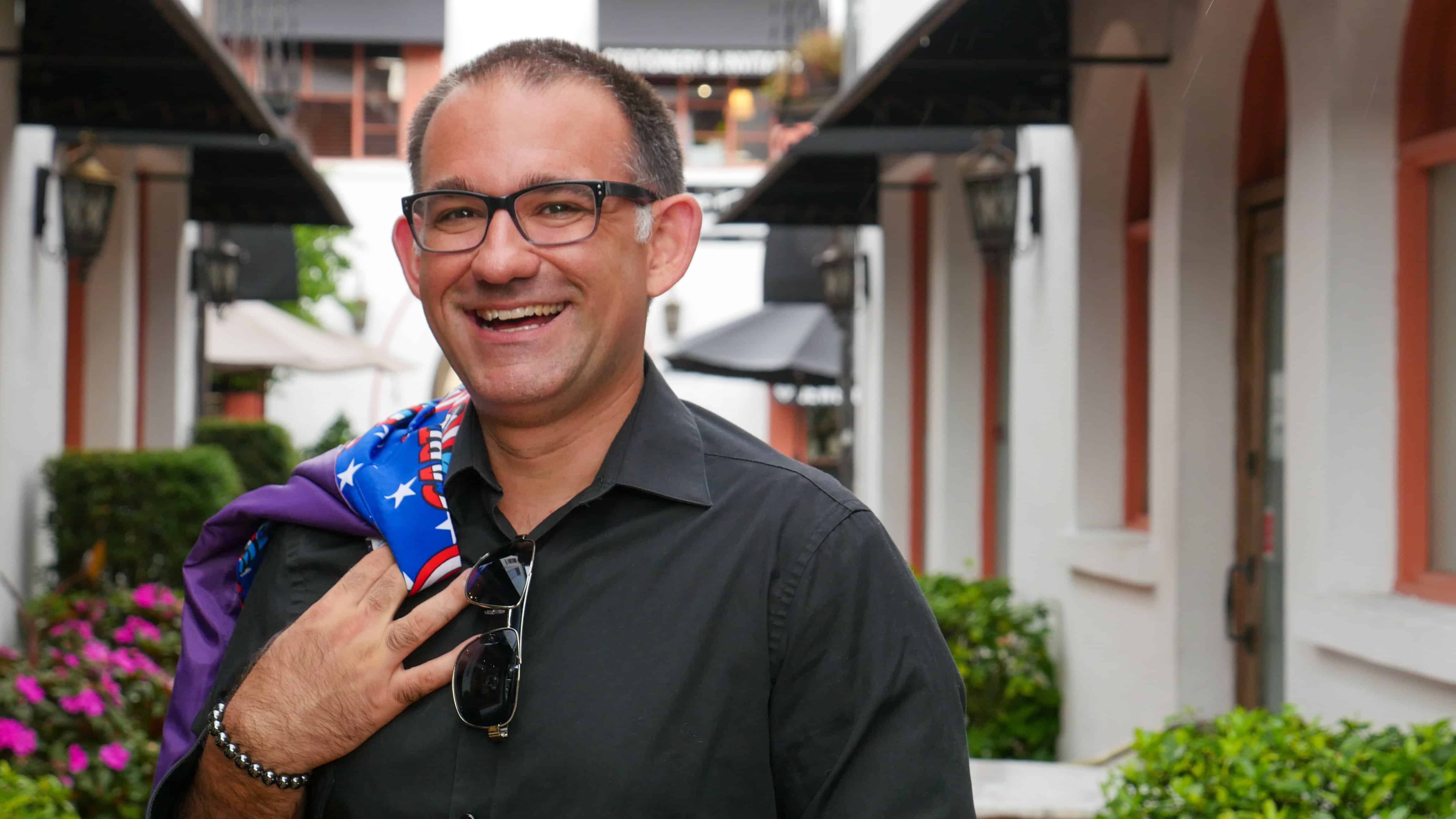
Table of Contents:
- Introduction: Curiosity
- The Original Mr. Peanut: George Washington Carver
- Re:Build Optimation & Peanuts
- The Lightbulb that created Ford Motor Co.
- Optimation & Cars
- Robotic Arms On Johnny Carson
- Industrial Automation from Re:Build Optimation
- Conclusion
Urban legend tells us that there was a time in American history when parents cautioned children that “Curiosity killed the cat”. Though the Shakespearean roots of this phrase have nothing to do with what we know to be “curiosity”, the modern adaptation of this lesson, clear as day, was to not be curious – or perhaps too curious – lest one cause problems. The broad connotations of this could, if one heeded this caution, could have bred agoraphobia across the nation if kids believed the caution. Thankfully, kids are curious by nature. Many live their young lives as if “I Wonder” and “What if” are personal mottos.
In all likelihood you’ve actually never heard someone caution you, unless in jest, that “Curiosity Killed the Cat”. No, instead if you grew up in the USA you were likely rewarded with praise for asking good questions and giving something you were curious about a test. Americans celebrate innovation, and we inherently understand that innovation is born from that very same curiosity we’ve heard caution about. “What if” and “I wonder”, and perhaps the more competitive cousin “There’s gotta be a better way”, are embedded in our American life and, arguably, central to another famous notion that the USA is THE world home of manufacturing.
Set aside the importance of the economic implications of manufacturing. Collectively, we manufacturers understand the vital nature of returning to our top-tier status, dare we say first position, as the world leader in manufacturing. Deeper than this, American Culture celebrates the makers, the inventors, the idea person, the dude-who-came-up-with-the-thing, etc. We celebrate the magic of inspiration and the impact of creation and this understanding is rooted in an American legacy of innovation and impact. Let’s take two 2 widely known and celebrated examples and one world-changing yet niche case of American innovation into account to illustrate where our collective affinity for the curious soul has come from.
George Washington Carver: The original Mr. Peanut
George Washington Carver is both an American hero of innovation and an example of color-barrier breaking. George Carver was born in 1864, a time between Lincoln’s Emancipation Proclamation of 1863 and Juneteenth, the day word of the Emancipation Proclamation reached Texas in 1866. His parents were slaves, and at the time of his birth though technically they were all free, life did not look different from in pre-1863 times. He and his mother were kidnapped by slave raiders when he was an infant. Mr. Carver, the farm owner who owned George and his mother, tracked them but was only able to buy back George as he could not find George’s mother. The Carver Family raised George as their own, teaching him to read and write.
Proclamation of 1863 and Juneteenth, the day word of the Emancipation Proclamation reached Texas in 1866. His parents were slaves, and at the time of his birth though technically they were all free, life did not look different from in pre-1863 times. He and his mother were kidnapped by slave raiders when he was an infant. Mr. Carver, the farm owner who owned George and his mother, tracked them but was only able to buy back George as he could not find George’s mother. The Carver Family raised George as their own, teaching him to read and write.
George left his adoptive home at the age of 11 to attend an all-Black school. Now, take note, because this is where George’s curiosity in life began to show. By age 13, George left this school because it was not teaching him enough, and he chose to migrate west to find schools that could teach him more. He leveraged domestic skills he had learned from previous homes he was in to finance his travels over the next decade. His journey was one of curiosity, as he was in search of education. Eventually, George Carver, who at this point in his life had no middle name, attended Iowa State Agricultural School and was the first African American to earn a Bachelor’s of Science in the United States. By 1896 he also had a Master’s Degree in Agriculture, which was partially why Booker T. Washington was convinced that Carver must teach at Tuskegee University.
Interestingly, though charged with teaching, George could not focus on his duties because his mind and heart were in exploratory research and study of all things botany. Carver, who would eventually add the name Washington to his own in honor of Booker T Washington, struggled with Washington’s teaching requirements. We as a society should be grateful that Carver spent so much time with his curious mind focused on testing and experimenting, though. One of his most impactful contributions to the world came from his soil chemistry tests that revealed nutrient depletion from over farming fields. His work on crop rotation put science behind the old notions of rotation that American Indians had practiced in preceding centuries. The yields from his one discovery changed the trajectory of American farming, but Carver was not done there.
Carver, who many believe erroneously invented peanut butter, was fascinated with the legume and its possibilities. History.com reports that,
“In all, he developed more than 300 food, industrial and commercial products from peanuts, including milk, Worcestershire sauce, punches, cooking oils and salad oil, paper, cosmetics, soaps and wood stains. He also experimented with peanut-based medicines, such as antiseptics, laxatives and goiter medications.”
A Black inventor and scientist, born of a time when many saw him as only 3/5ths a human, changed the world. He testified in the US Congress. He traveled to meet Gandhi. He set an example and a very high bar for what it means to be a curious American. His legacy is taught about in grade schools across the United States as an inspiring example and an instructive concept of the merits of curiosity.
Optimation and Peanuts
We at Optimation owe George Washington Carver a thank you for both his example of how to live as a curious person but also his work with the peanut. As you can read about in our blog PEANUT BUTTER PLANT EXPANTION we had the privilege of working with Once Again Nut Butter to design and build their manufacturing plant where they take nuts of all kinds and turn them into butters. While we know that Carver didn’t specifically invent peanut butter itself, his work to combat the boll weevil, which threatened commercial crops in the early 1900s, led to the peanut becoming a viable and necessary commercial crop. Next time you have a delicious peanut butter treat with Once Again Nut Butter, say a thank you to George Washington Carver.
The Lightbulb that created Ford Motor Co.
Likely the best known and most referenced inventor and manufacturer in American history, Henry Ford is known as both the father of the American Automobile and the Father of the Modern Manufacturing Assembly Line. His results are undeniable, his legacy sealed as being central to the identity of American Manufacturing and also American Ingenuity. What is scantly discussed are the roots of how Henry went from just-a-guy to American Manufacturing Icon.

Ford, like so many Americans born in the late 1800s, was a farm boy. Unlike many at his age, he also was uninterested in the farm life. Ford had a mechanical mind. At 16, he apprenticed in a machine shop. At night, he’d work on the family farm in a barn, where he’d tinker and dream up designs for automobiles. By the age of 28 Henry Ford took a job in Detroit working for the Edison Illumination Company as an engineer. Being a long way from Menlo Park, NJ, Edison was not in Detroit, and it would be unlikely that Ford would ever meet his famed employer.
Five years into his time at Edison Illumination Co (the precursor to the famed power company ConEd), Henry Ford was promoted to Chief Engineer. Also, over the five years of his time working for Edison by day, by night Ford was still obsessed with the idea of a gas-powered automobile. In 1896, the same year he was promoted, he finished a functional prototype of a horseless carriage he called the Quadricycle. And, as you would expect with at title of Chief Engineer, it was high time that the boss meet his newest company leader. Edison and Ford met for the first time in 1896 and somehow, through a conversation, we’ll likely never have details on, Ford told Edison about a side passion he has and an invention he’s made.
For some perspective on who Thomas Edison was by the time he met Henry Ford, the lightbulb patent was already 16 years old. Edison Illumination Co, which existed to create power plants and run power lines so that lightbulbs would have the resource they needed to function, was also 16. Edison was well-financed and wealthy at this point. His friends were magnates of industry. This type of influence and access to wealth was precisely the break Ford needed and was quite prepared for, yet likely had no clue was about to walk into his office.
A curious tinkerer asked himself, “what if a carriage didn’t need a horse?”. A curious tinkerer labored for many years to discover a satisfactory answer for his curiosity. A meeting of great minds, one with established influence and equal curiosity, discovered a man with a design worth taking seriously. Was this luck? Perhaps. But a chance meeting between someone like Edison and an unprepared, incurious person would be a mere celebrity sighting. In the case of Ford meeting Edison, we see a diligently curious and prepared person who lived a life designed to capitalize on eventually meeting someone like Thomas Alva Edison.
Optimation & Cars:
In modern times, you’ll find that engineers and tradespeople alike love automobiles. In both our personal and professional lives here, you’ll find that we are “gear heads”. Wendy Smith, Chief Operating Officer of Re:Build Optimation in fact builds and maintains her own classic muscle cars like many of our employees here do in their spare time. This is why it was so exciting to work with Netflix on their show Hyperdrive. Optimation created the three-dimensional obstacle course for this racing and stunt driving reality-competition TV show which was filmed in our hometown of Rochester, NY on the site of Eastman Business Park. Our designers, fabricators, and installation team really got to flex their creativity and ask a lot of exciting “what if” questions, answering them with epic results.
You may have never heard of Mr George Devol, but you know his work. In fact, go to a grocery store right now and walk in. Those doors that open? One of his inventions was the automatic door! Devol also invented the first barcode reader, which helped sort packages for railroads. Oh, and he also invented the Speedy Weenie – a microwave hotdog cooker. And, all of that isn’t what made him famous, however. George Devol is the father of Robotic Automation of Manufacturing with his invention (patented in 1954) called the Unimate.
As legend has it, George Devol and Unimation co-founder Joseph Engelberger had an epiphany while talking at a cocktail party. Their idea was to create a multi-axis, intelligent machine to accomplish difficult tasks in manufacturing. As Joseph tells it, “I went to 46 different companies for funding before we found someone who believe it (industrial robotic automation) could be done. In 1961 the Unimate, a product of Unimation, was a functioning prototype. Unfortunately, adoption was slow. One of the early marketing tactics for Unimation was to book a show and tell on the Johnny Carson show. They tried to make it seem like the robot was as good, or better, at doing the show than Carson. Unimate was a hit!
Even though it was a cultural hit on the Johnny Carson show, the Unimate didn’t turn a profit for more than a decade. It was partnership with Kawasaki in Japan that would propel industrial robotic automation to both profitability and manufacturing prowess. The rest, as you might say, is history. And, it is for this reason that Devol is considered the Grandfather of Robotics and Engelberg the Father.
For both men, but especially Devol, a life of curiosity and relentless diligent belief in their own abilities and ideas led to success. In fact, you might call it overnight success. What is “overnight success” other than the public suddenly gaining awareness of a phenomenon even though that phenomenon may have taken a very long time to come to be.
What is the reason Devol and Engelberg are solidified in history as the creators of modern robotics? Curiosity and diligence, which made room for great “luck”.
Automation At Re:Build Optimation
On any given day, designers and/or millwrights are dealing with industrial automation here at Re:Build Optimation. In modern robotics we have many options for many reasons, from Cartesian Robots, to Articulated (like the Unimate was), SCARA, and Delta. We’re careful to choose both the type as well as the manufacturer based on the application at hand – we are manufacturer agnostic, which allows us to focus on client needs first.
Learn more about our work in robot integration into industrial automation solutions here: https://optimation.us/blogs/robotic-integration-industrial-automation-solutions/
Conclusion
Behind EVERY successful inventor and manufacturer is a story that is rooted in the marriage of Curiosity and Diligence. This is true of Re:Build Optimation. In the 1980s, when Bill Pollock founded Optimation his plan was based on a desire to support advanced automation in American manufacturing while employing talented and creative engineers, and to do so while providing the best possible work life balance.
Now, in the 2020s, RE:Build is an accelerator for this tried and true formula. It’s an ecosystem of Curious people, with all the best practices and professionalism that a diligent manufacturing workforce ought to be. American’s have not cornered the market on Curiosity and Diligence – but as evidenced by a legacy of innovation and commercialization, we are world leaders in creating the space for success.
And what of Luck? Why is American manufacturing success in any way Lucky?
Whether you believe in luck or not, there’s a thing that happens in human perception over time. This phenomenon is a nearly comical result of the persistence and focus that come from diligent pursuit of curiosity. Think of those times when you’re engrossed in a project. Have you lost track of the time? Have you been late for dinner or a meeting because of your focus? And when you’ve hit the Ah-ha moment where you figured out how to accomplish your goal, have you not felt for a moment that your findings were serendipitous and, dare we say, lucky? We creators, inventors, we the curious… Our focus is strong, our toil is real, and our successes are well deserved and necessary… but that process is, ironically, also a place where we create our own luck.
We encourage you to work with the lucky lot of us here at Optimation. Re:Build Optiomation is a place where curiosity births important ideas. Our diligence, or put another way, labor, is how the ideas of our curious minds become tested, iterated, refined and real. We know that Thomas Jefferson was right when he once comically stated, “the harder I work, the luckier I get”.
Contact Us
Form located in the contact us page
 About the Author:
About the Author:
Josh Pies is a multi-awarded Film, TV & Advertising Producer/Director. In 2016 he wrote and produced the Elevate Iowa documentary series on Advanced Manufacturing and in 2017 he co-created the manufacturing reality show Reality Redesigned. Josh is the Executive Producer & “Chief Attention Getter” at C47 Film Associates (www.C47Films.com). C47 Films produces visual content and creates branding solutions for businesses across the United States. Read more from Josh at https://c47films.com/blog/.
